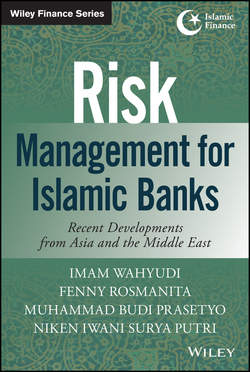Читать книгу Risk Management for Islamic Banks - Imam Wahyudi - Страница 20
На сайте Литреса книга снята с продажи.
Part One
Introduction
Chapter 2
The Islamic Bank and Risk Management
Various Approaches on Risk Identification
ОглавлениеThe response of Islamic banks toward risk can be divided into several groups. The first is risk averse or risk avoidance. The bank tends to avoid transaction if the risk from that transaction cannot be compensated by an appropriate return. If the risk can be compensated by an appropriate return, then the bank will enter that transaction. The second is risk transfer. The bank transfers the risk of a transaction to a third party. This method is often used in the conventional insurance industry, where the insurance firm is willing to bear a certain amount of risk belonging to the insured. In the Islamic banking industry, this method is difficult to do because of the absence of institutions that can bear the financial risk and the difficulty in finding a form of contract that is in accordance with the Islamic syari'ah. The third is risk sharing. Unlike risk transfer, the risk in the risk sharing approach is borne together by all risk bearers. In the balance considerations of the Islamic syari'ah, this method is very plausible to use, even if it is not commonly in practice in the current banking industry. The bank can also divide and transfer risk by diversification, subcontracting, outsourcing, takaful, or entering into a musyarakah-based business. Once the bank has decided to accept risk, the bank should also decide on the scope of the risk, the tolerance limit, and the risk measurement used, as well as develop a reliable monitoring system.
